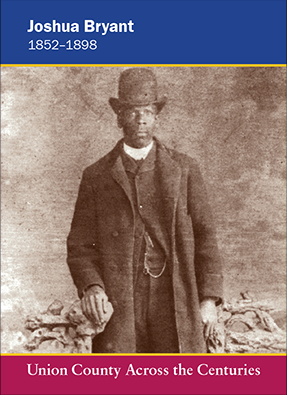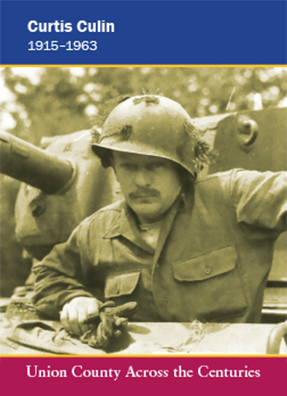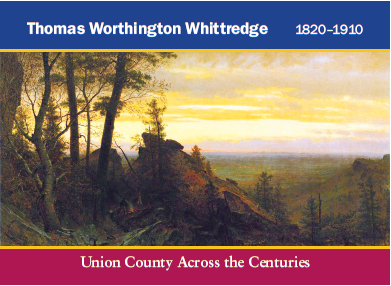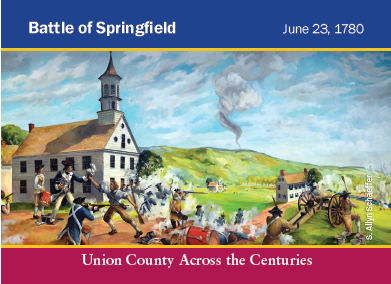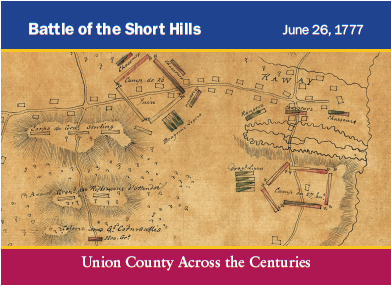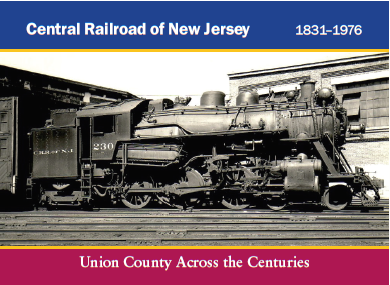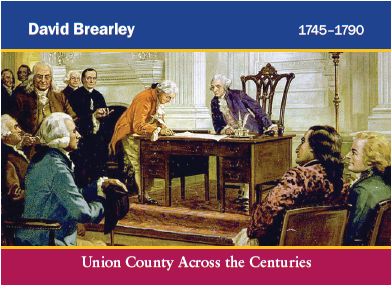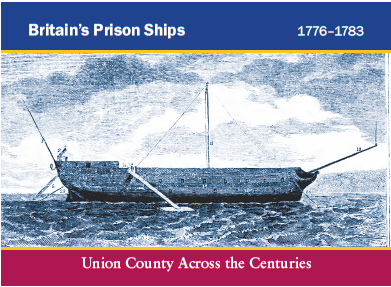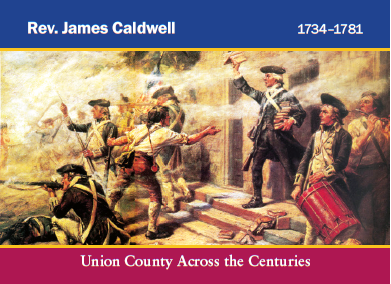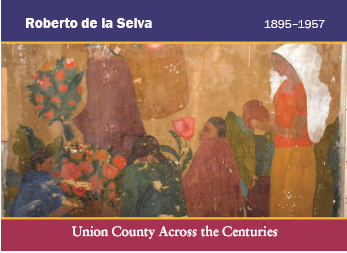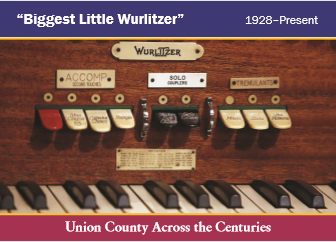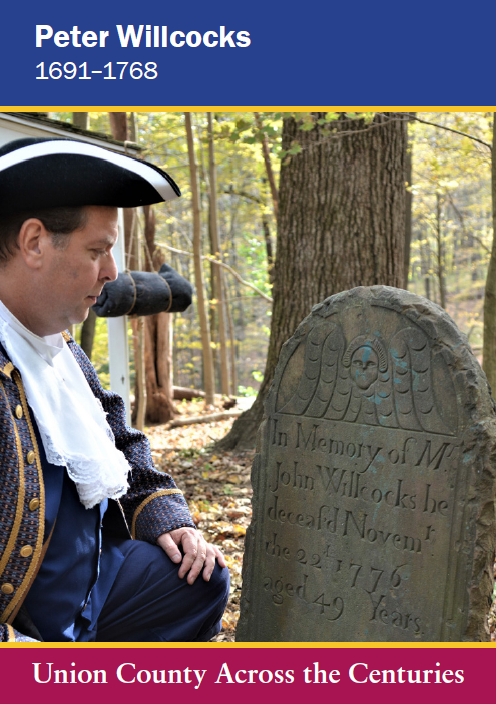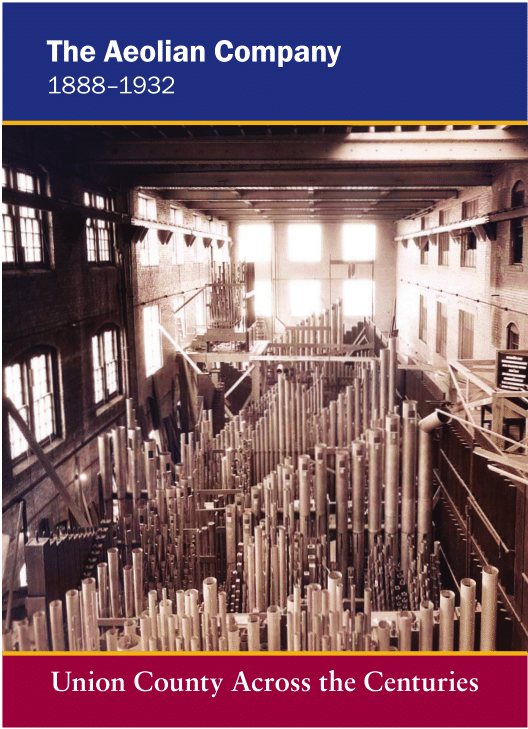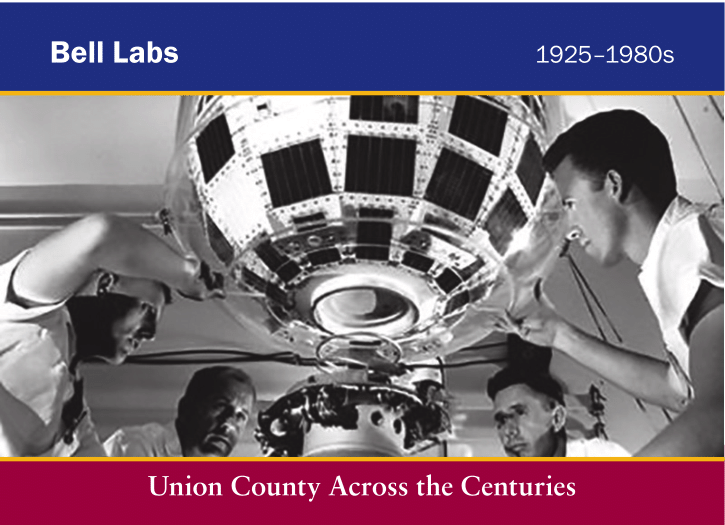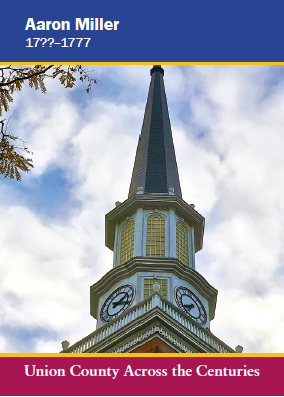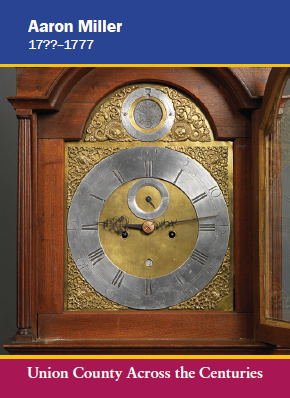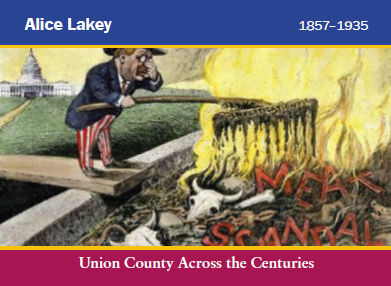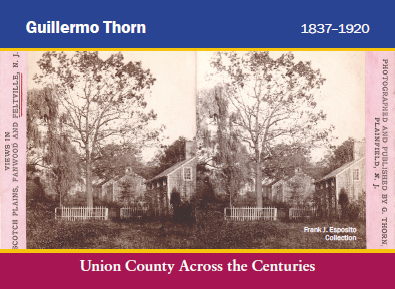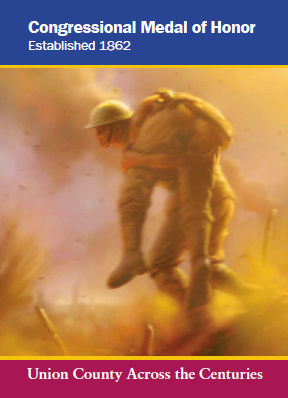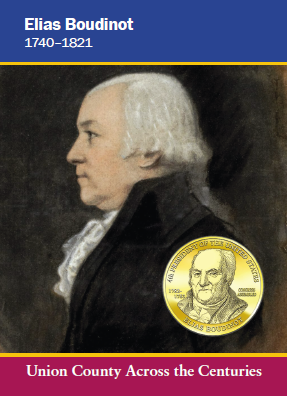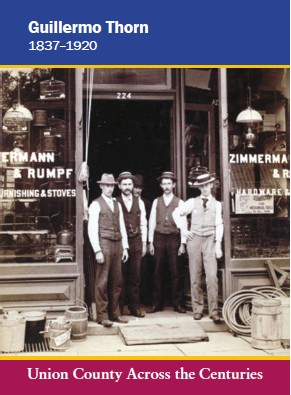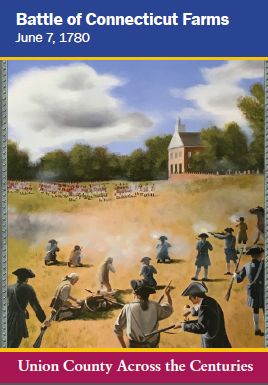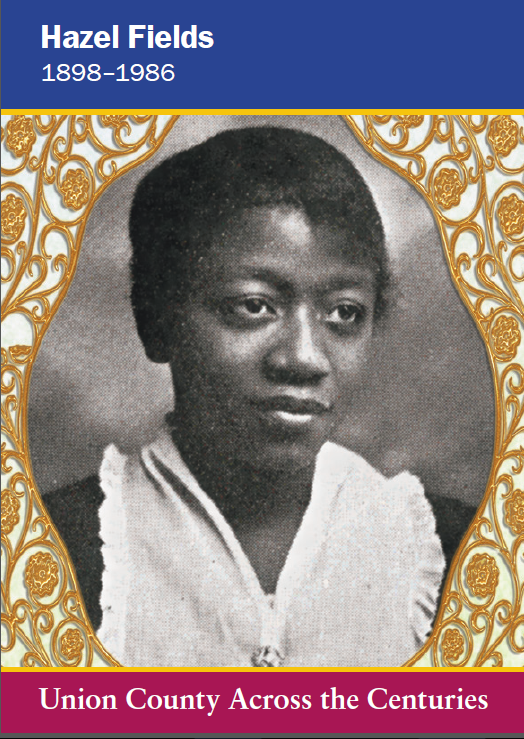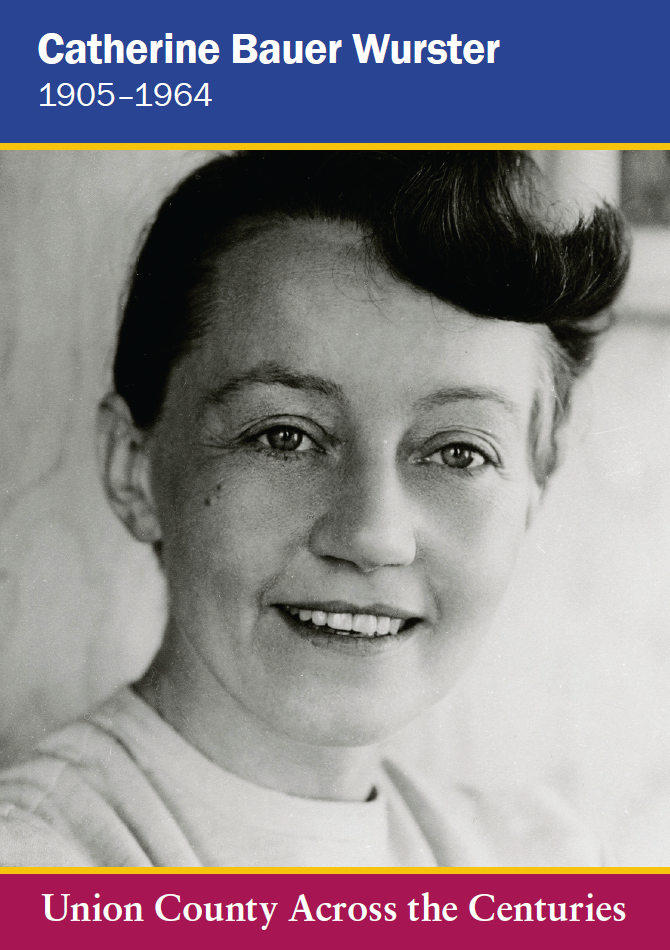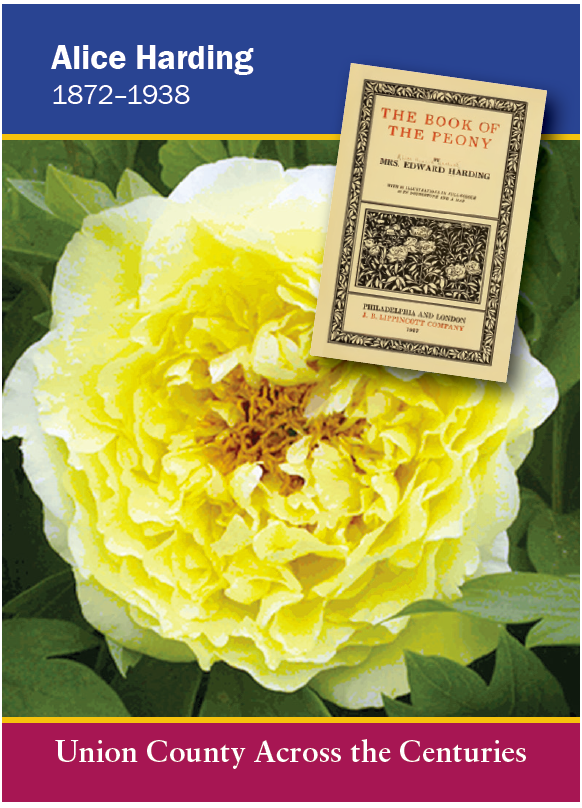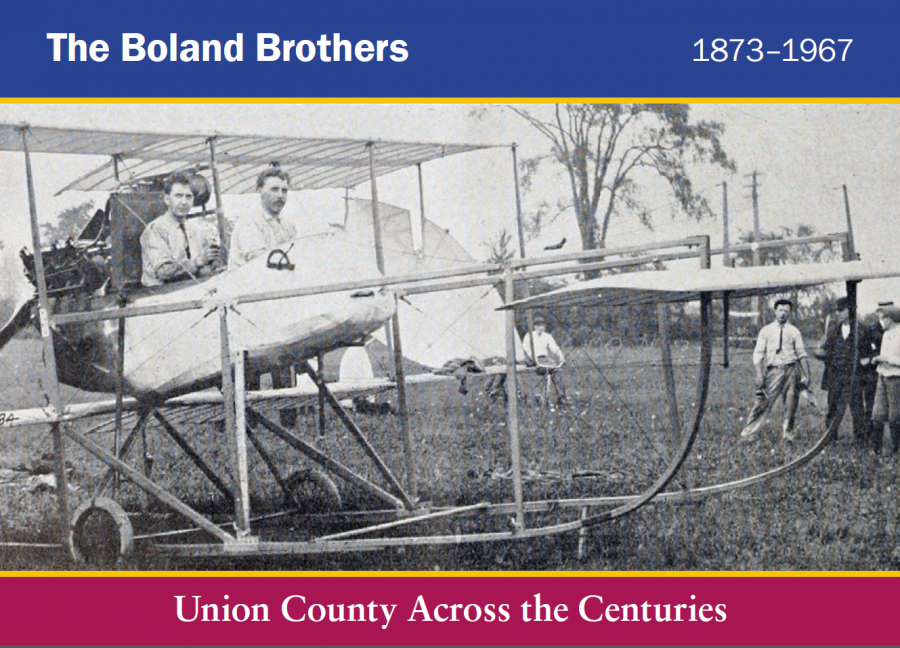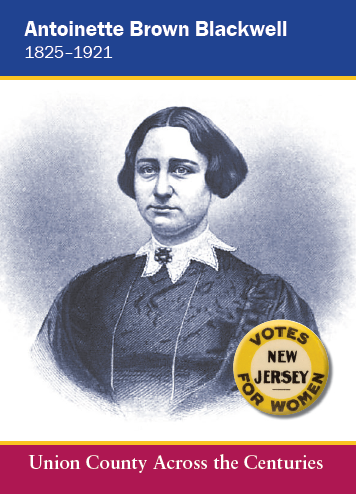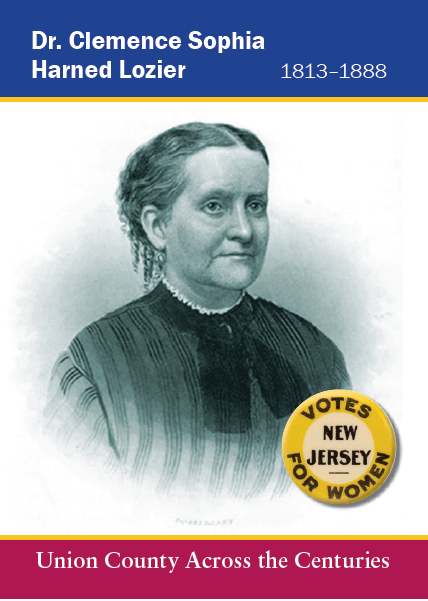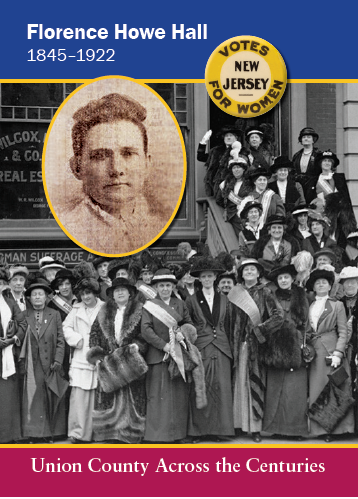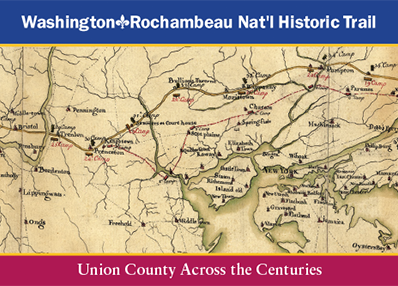Welcome

Union County offers more than 60 commemorative history trading cards, which are free. Each card features a notable person, place, event, or theme from Union County’s 400-year history. Collecting the cards is a fun way to learn about people and events that shaped life in this county—and the nation.
Cards include: Alexander Hamilton, George Washington, William Livingston, Revolutionary War battles, Langston Hughes, Virginia Apgar, notable artists and suffragists, and more. Ask for trading cards when visiting historic sites across Union County. There are more than 30 sites; most offer at least one card.
Scroll down to see historic sites where cards are available. (Inquire ahead about visiting hours.)
Where to find the trading cards
Berkeley Heights
Deserted Village of Feltville / Glenside Park/Willcocks Farm-Mill & Cemetery
Battle of the Short Hills
Peter Willcockse
Roberto de la Selva
Mills of the Watchungs
Washington-Rochambeau National Historic Trail*
Battle of the Short Hills Historic Trail*
Rochambeau*
Guillermo Thorn (DV) (Stereograph)
Peter Willcockse
Littell-Lord Farmstead
William Livingston
MacKinlay Kantor
Bell Labs Picture Phone
Clark
Dr. William Robinson Plantation-Museum
Abraham Clark
British Prison Ships
Cranford
Crane-Phillips House Museum
Medal of Honor*
Alice Lakey
Elizabeth
Boxwood Hall State Historic Site – Boudinot Mansion
Hannah Arnett
Jonathan Dayton
Aaron Miller
First Presbyterian Church of Elizabeth
Hannah Arnett
Jonathan Dayton
Aaron Miller
Snyder Academy
Alexander Hamilton
Nathaniel Bonnell Homestead & Belcher-Ogden Mansion
Aaron Ogden
George Washington
Aaron Miller
St. John’s Parsonage
All
Boudinot Mansion
Elias Boudinot
Elizabeth Public Library
Catherine Bauer Wurster
CNJ (Diesel locomotive)
CNJ (The Arch painting)
William “Bull” Halsey
Medal of Honor
Thomas Mitchell
Herb Kraft*
Green Book
Carnegie Libraries
Elizabeth Carnegie Library
I.M. Singer Company
Fanwood
Historic Fanwood Train Station Museum
Alice Harding
CNJ (Steam locomotive)
Garwood
Borough Library
Aeolian
Hillside
Evergreen Cemetery
No cards
Woodruff House/Eaton Store Museum
Lionel Trains
Kenilworth
Oswald J. Nitschke House
David Brearley
Tin Kettle Hill
Linden
City Library
GM Plant
Mountainside
New Providence
Salt Box Museum
Bell Labs Telstar
Mountainside
Deacon Andrew Hetfield House
MacKinlay Kantor
Baltus Roll
Deacon Andrew Hetfield House
MacKinlay Kantor
Baltus Roll
Plainfield
Drake House Museum
Alice Harding
Caesar
George Washington
Alexander Hamilton
Hazel Fields
Drake House
Guillermo Thorn (hardware store)
Margaret Bourke-White (fighter plane)
Plainfield Meetinghouse
Hazel Fields*
Margaret Bourke-White (Gandhi)
Rahway
Merchants and Drovers Tavern
Boland Brothers
George Washington
Kings Highway
Lincoln Highway
Medal of Honor
Union County Performing Arts Center
Wurlitzer
Roselle
Abraham Clark Memorial House
Abraham Clark
British Prison Ships
Roselle Park
Roselle Park Museum
Marconi
Scotch Plains
Battle of Short Hills (Ash Brook Reservation)
Battle of the Short Hills
Lord Cornwallis
Caesar
Washington-Rochambeau National Historic Trail*
Rochambeau*
The Elizabeth and Gershom Frazee House
Betty Frazee
Washington-Rochambeau National Historic Trail*
Rochambeau*
Osborn Cannonball House
Caesar
Betty Frazee
Battle of the Short Hills
Charles Cornwallis
Washington-Rochambeau National Historic Trail*
Rochambeau*
Battle of the Short Hills Historic Trail*
The Shady Rest & Country Club
John Shippen Jr.
Springfield
Cannonball House
Battle of Springfield
Jonathan Dayton
Washington-Rochambeau National Historic Trail*
Rochambeau*
Summit
Carter House
Worthington Whittredge
Medal of Honor
Washington-Rochambeau National Historic Trail*
Rochambeau*
Reeves-Reed Arboretum
Worthington Whittredge
Washington-Rochambeau National Historic Trail*
Rochambeau*
Summit Playhouse
Worthington Whittredge
Twin Maples
Worthington Whittredge
Union
Caldwell Parsonage
Hannah Caldwell
Rev. Caldwell
Medal of Honor
Battle of Connecticut Farms
Connecticut Farms Church
Hannah Caldwell
Rev. Caldwell
Battle of Connecticut Farms
Liberty Hall Museum
William Livingston
John Kean
Westfield
Miller-Cory House Museum
Cornwallis
Battle of the Short Hills
Rochambeau*
Washington-Rochambeau National Historic Trail*
Reeve History & Cultural Resource Center
Virginia Apgar
Langston Hughes
Zora Neale Hurston
Charles Addams
Winfield
Library
World War II Housing
Cards
Before the Cranford Police Department existed, an elected constable enforced the laws in Cranford. Joshua Bryant was elected Constable in 1881, then re-elected three times to three-year terms — the first African-American person elected to office in Cranford.
Born in Virginia, Bryant had come to Cranford around 1873, initially working as a coachman. After the New Jersey state constitution was amended in 1875, no longer restricting voting to “whites,” he quickly registered to vote and became prominent in Republican politics.
He was a community leader and an original member of the First Baptist Church on High Street.
Sgt. Curtis Culin, a Cranford native, served in the New Jersey National Guard during World War II. In 1944, he collaborated with others to design a four-pronged plow that mounted onto tanks, using iron from German roadblocks and beach defenses.
Nicknamed the “rhino,” the plow enabled tanks to cut a path through hedgerows. Later that year, Culin was injured in heavy fighting, losing a foot. He and three others were awarded the Legion of Merit for their work.
Gen. Dwight Eisenhower credited the rhino plow with restoring the effectiveness of tanks in leading the drive to liberate France, and for providing a “tremendous boost to morale throughout the Army.”
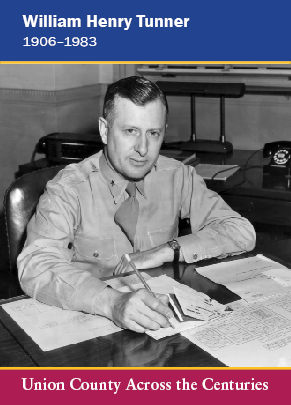
His skill in mobilizing supply lines for American troops was so legendary that not only did he receive the nickname “Tonnage Tunner,” but the U.S. Air Force created the Lt. General William H. Tunner Award, which annually recognizes an “outstanding strategic airlift crew.” Raised in Roselle, Tunner attended the Military Academy at West Point.
During WWII, he commanded airlift supply operations from India to China, and during the Korean Conflict, was awarded the Distinguished Service Cross for the airlift that supported the invasion at Inchon.
His reputation grew further when he was brought in to manage the massive 1948 Berlin Airlift.
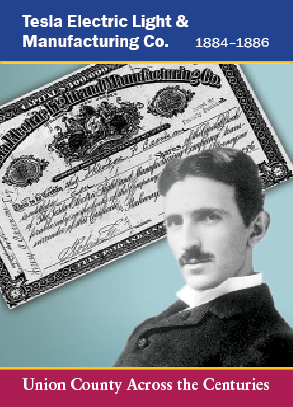
Immigrant inventor Nikola Tesla sought help from businessmen to patent a new type of arc lighting system, a fast growing segment of the new electric light industry used mostly for outdoor lighting. By 1886, Tesla Electric Light & Manufacturing had installed a central station-based system in Rahway, lighting streets as well as a few factory buildings.
However, Tesla’s investors had little interest in his ideas for new types of motors and transmission equipment and with the market already dominated by several other companies, they opted to develop an electric utility rather than invent new systems, spelling the end for Tesla Electric.
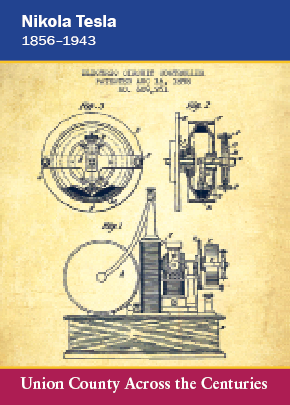
Born and raised in the Austrian Empire, Nikola Tesla studied engineering and physics before emigrating to the United States in 1884. He made notable contributions to the design of modern alternating current (AC), but his failing business ventures and opposition from entrenched companies would leave him penniless.
His plans to create new lighting systems at his plant in Rahway were upended by investors who controlled his patents. Tesla believed there could be wireless lighting and worldwide wireless electric power distribution, along with the possibility of wireless communication with his devices. He ran out of funding before he could develop these.
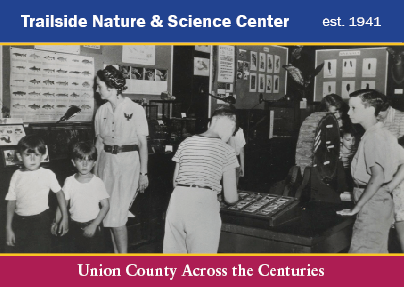
In 1941, a small nature display was set up on a table in the corner of a plant nursery garage in Union County Parks’ Watchung Reservation. The display was so popular that the entire building was quickly given over to exhibits and became the Trailside Museum, a name derived from the National Park Service’s model for museums located next to trails.
The building was expanded in 1952 and a planetarium was added in 1969. A modern Visitor Center designed by architect Michael Graves was erected uphill from the aging buildings in 1975, and expanded in 2006. Trailside Nature & Science Center is among the nation’s oldest trailside museums.
Would you be so brave? When Abraham Clark signed the Declaration of Independence along with the other representatives of the thirteen colonies, they put their very lives at risk for such a treasonous act. Clark taught himself law and became quite popular.
He was called “the poor man’s councilor,” offering to defend poor men when they couldn’t afford a lawyer. When the residents of Rahway’s 5th Ward voted in 1864 to secede, they named their new community after Clark, while Roselle built a replica of his 18th century home.
As a teen, Alexander Hamilton immigrated to America and attended the Academy in Elizabethtown (now Elizabeth) in preparation for college. He regularly visited and stayed with the Boudinot family at Boxwood Hall.
He also lived for a time at Liberty Hall, the home of William Livingston. Hamilton became a leading political figure and one of the Founding Fathers of the United States. He was the primary founder of the nation’s financial and banking systems, and the first secretary of the Treasury.
A highly regarded artist of the Hudson River School, Whittredge painted landscapes that hang in major museums and the Carter House, home of the Summit Historical Society. Whittredge moved to Summit in 1880, where he continued to paint for 30 years.
He had traveled from the Great Plains to the Rockies in 1865 with Sanford Gifford and John Frederick Kensett, resulting in some of his most important work. “Whoever crossed the plains …could hardly fail to be impressed with its vastness and silence and the appearance everywhere of an innocent, primitive existence,” he wrote.
New Jersey’s fifth governor, Aaron Ogden, held many prestigious posts during his career. Perhaps the most intriguing chapter of his life came when Gen. George Washington summoned him for a special mission—to secure the return of Benedict Arnold, the most infamous traitor in American history.
Ogden attempted a trade of Arnold for British Major John Andre, who was carrying papers revealing Arnold’s betrayal of his troops at West Point. The British rejected the exchange. Andre was hanged and Arnold went on to lead British troops at Yorktown.
This battle was the final major confrontation between American and Crown forces in the North. Had the British broken through the American line and vanquished Washington’s forces in Morristown, the war would have taken a very different turn.
A month later, 6,000 French troops arrived in Rhode Island, providing desperately needed reinforcements. In 1781, memory of the losses at Springfield prevented the British from attacking the armies of Washington and Rochambeau on their march to Yorktown, Virginia, where they ultimately defeated the British.
On the plains below the Watchung Mountains, Gen. Washington’s force of fewer than 6,000 men fought a running battle with combined British and Hessian troops numbering nearly 12,000. Feigning retreat, British Gen. Howe sought to defeat the colonial forces by luring them to the lowlands.
The battle started in Metuchen and made its way to the Ash Swamp, where delaying tactics gave Washington’s troops and local militia enough time to return to the safety of the Watchungs. Ash Brook Reservation is on the new Battle of the Short Hills Historic Trail.
According to legend, with his troops tired and hungry after the Battle of the Short Hills, British General Cornwallis stopped at the Frazee house at the smell of baking bread. Cornwallis introduced himself and asked “Aunt Betty” if he could have some bread for his troops, to which she is said to have replied, “Sir, I give you this bread through fear, not in love.”
Cornwallis is said to have then politely declined to take the bread. However, historical records indicate his troops plundered the property, taking tools, livestock, a hive and household goods.
Fleet Admiral William “Bull” Halsey Jr. grew up on West Jersey St. in Elizabeth, attending the Pingry School. After graduating from the United States Naval Academy, he served in both world wars, rising to commander of the South Pacific in World War II. Halsey led the Allied forces in the Battle for Guadalcanal and the Solomon Islands.
He also took part in the Battle for Leyte Gulf, the largest naval battle of WWII and, considered by some, the largest naval battle in history. He was present when Japan formally surrendered on the deck of the USS Missouri, on September 2, 1945.
Born in 1702 in what is now Guinea, Caesar was captured and brought to America. He was sold as a slave to Isaac Drake to work his 111-acre Plainfield farm. Caesar, who like many slaves, had no last name, was freed in 1769.
During the Revolutionary War, he was a teamster, driving supply wagons to troops stationed at the Blue Hills Fort and Camp in Plainfield in what is now Union County’s Green Brook Park. Soldiers from this garrison fought in The Battle of the Short Hills.
The Earl Cornwallis was a leading British general in the American War of Independence. After defeating Cornwallis at Yorktown, effectively winning the war, Gen. Washington invited Cornwallis to dine with him. In the tradition of the day, a toast was offered by the vanquished to the victor. Cornwallis rose and gave this toast: “When the illustrious part that your Excellency has borne in this long and arduous contest becomes a matter of history, fame will gather your brightest laurels rather from the banks of the Delaware than from those of the Chesapeake.”
The Central Railroad of New Jersey played a major role in the development of Union County, from Elizabethport to Plainfield. Founded in 1831 as the Elizabethtown & Somerville Railroad, horse-drawn trains took passengers from Elizabeth to Elizabethport and the ferry to New York. The arrival of steam engines in 1839 coincided with the line reaching Plainfield. Through mergers, the CNJ continued expanding west and south, connecting to Somerville and out to Pennsylvania, along with the famous Blue Comet, which ran from the CNJ’s main terminal in Jersey City to Atlantic City.
At age 34, David Brearley was appointed Chief Justice of the NJ Supreme Court. Eight years later, he would represent New Jersey at the Constitutional Convention. He opposed proportional representation in Congress, favoring a system of one vote per state to protect smaller states. He chaired the Committee on Postponed Matters, which was ultimately responsible for deciding the powers and term a President would serve. Brearley rose through the ranks of the Continental Army, taking part in the battles of Short Hills, Brandywine, Germantown, and Monmouth.
More American soldiers died (11,000+) from the horrid conditions on the British Navy’s prison ships than in Revolutionary War battles (6,800). With more than 1,000 men crammed into a ship’s hold, every morning the dead would be carried up on deck and hauled ashore. If a captured soldier would renounce the Revolution —most refused—he could go free. Two sons of Abraham Clark, a signer of the Declaration of Independence, were prisoners on the HMS Jersey. The British offered to release them if Clark would swear allegiance to The Crown. He refused.
George Washington was no stranger to Union County. In June 1777, during the Battle of the Short Hills, he stationed his field command at the Plainfield home of Isaac Drake. He was a guest of William Livingston at his Liberty Hall home in Union, as well as at Boxwood Hall, the Elizabethtown home of Elias Boudinot, a prominent statesman. During Washington’s historic journey from his Mount Vernon home to New York—to be sworn in as the first President of the United States of America—he had breakfast at Boxwood before heading to his inauguration.
With crushing American defeats on Long Island and then Fort Lee, a group of men met at the Elizabethtown home of Isaac Arnett to consider their fate. But when the men agreed to side with the Crown, Hannah arose and castigated them—Isaac included—as traitors: “Isaac, we have lived together for twenty years, and through all of them I have been a true and loving wife; but… if you do this shameful thing, I will never own you again as my husband.” When she was done, the men reconsidered and vowed to continue their fight for Independence.
Hannah Caldwell was married to the minister of the Presbyterian Church in Elizabethtown, Reverend James Caldwell, who fought fervently with the patriots against the British in the Revolutionary War. In 1780, during the Battle of Connecticut Farms (in what is now Union), Hannah was fatally shot in the parsonage. It has been long debated whether the British had targeted the Caldwells or Hannah’s death was an accident of war. Her death is commemorated on the Union County seal.
During the 1780 Battle of Springfield, American soldiers were running low on ammunition for their smoothbore muskets. Gunpowder and a lead ball would be wrapped in paper and then rammed down the barrel, with paper wadding holding everything tightly in place. On hearing the need for paper, the Rev. Caldwell rode to his church, grabbed a stack of hymnals written by Isaac Watts, and took the books to the soldiers to use the pages for wadding. As he did, he shouted, “Give ’em Watts, Boys!,” a battle cry that became famous and the basis for this painting
Born to a wealthy family in Elizabethtown (now Elizabeth), Jonathan Dayton joined the Continental Army and served throughout the Revolutionary War, rising to the rank of captain. He was the youngest person to sign the U.S. Constitution. Dayton served in the New Jersey Legislature and the U.S. House of Representatives, including time as Speaker of the House. He also served in the U.S. Senate. In 1795, Dayton purchased Boxwood Hall, where he resided until his death.
Born into one of New Jersey’s most prominent families, John Kean would ultimately take his place at the head of the family’s extensive holdings: The National State Bank, Elizabethtown Gas and Elizabethtown Water. He graduated Harvard Law School and practiced law in Newark. Soon after joining the NJ National Guard, President Wilson sent his troop into Mexico to pursue Pancho Villa. When World War I broke out, Kean was sent to France, where he was severely wounded in the Battle of the Argonne Forest. It would take him nearly a year to recover.
Today’s cellphone would not exist if not for the scientists who believed signals did not need wires. On Westfield Avenue in Roselle Park, the Romerovski Bros. factory site was formerly “The Marconi Wireless Telegraph Company of America.” The invention of wireless communication by Guglielmo Marconi led to factories including this facility, where radio and wireless equipment was manufactured for the U.S. Navy during World War I. Later, this site was home to one of the first licensed broadcast radio stations in the country, WDY.
A journalist and prolific author, MacKinlay Kantor received the 1956 Pulitzer Prize for Fiction for Andersonville. He was an early resident of Free Acres, a utopian community in Berkeley Heights, and during the Great Depression, was a tenant in the then privately owned Deacon Hetfield House in Mountainside. Kantor allowed his name to be used on a 1950s screenplay by Dalton Trumbo, one of the “Hollywood Ten” blacklisted for refusing to testify before the House Un-American Activities Committee (HUAC). Kantor then passed his payment to Trumbo to help him
Raised in Westfield, Dr. Virginia Apgar is renowned for establishing the method known as the Apgar Score, used in hospitals worldwide, to assess the condition of newborns by observing five key health factors. A leader in the field of anesthesiology, Apgar was the first woman to head a division at Columbia Presbyterian. During her career, she treated women and infants, and researched genetics and birth defects. She advocated for vaccination to prevent mother-to-child transmission of rubella. Apgar was inducted into the National Women’s Hall of Fame in 1995.
From 1770, William Livingston resided in a stately home he named Liberty Hall. Livingston was elected New Jersey’s first governor in 1776. He persuasively urged the citizenry and legislature to support the War of Independence. During the war, he commanded the New Jersey militia. British commanders sought several times to capture or assassinate him. Livingston was a signer of the U.S. Constitution and an influential leader in the development of the new nation.
In 1850, Isaac M. Singer patented a sewing machine that could produce 900 stitches per minute. Seven years later, he and attorney Edward Clark formed I.M. Singer Company, which became the worldwide leader in the production of sewing machines. The Singer plant in Elizabethport became the world’s largest factory, eventually employing more than 10,000 people. During World Wars I and II, munitions were manufactured here. In 1949, when this factory’s workers were out on strike, twenty percent of Elizabeth’s workforce had no income. The plant closed in 1982.
Nicaraguan-born artist Roberto de la Selva studied in Mexico. His work, influenced by that of Diego Rivera, is found in museums and private art collections. Although known for his bas relief, scenes and portraits carved in wood, during the 1920s he painted several murals on the walls in a home in the Deserted Village. These are the only known murals by De la Selva. He later returned to Mexico, where he ultimately gave up his art and took a civil service job. At some point, the murals were covered by wallpaper and forgotten— until 1975, when removal of the wallpaper led to their discovery.
The Union County Performing Arts Center still stands today, in good measure, because no one wanted to see its historic Wurlitzer pipe organ fade into memory. Custom built in 1928 for silent movies, the Rahway Theatre organ’s 600+ pipes were installed in two lofts on both sides of the proscenium to heighten the sound. During WWII, many organs were scrapped, their metal donated to the war effort. This organ miraculously survived the arrival of sound movies and continues to be used for concerts and movies. Once one of almost 1,000 theater organs in New Jersey, it is now one of 11. In Production.
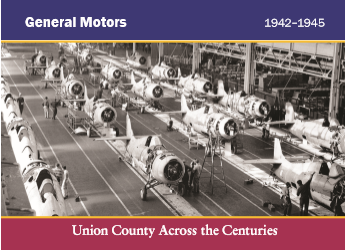
Thrust into World War II with the bombing of Pearl Harbor, America needed military equipment quickly. Linden’s General Motors plant went from Buicks, Pontiacs and Oldsmobiles to fighter planes. GM paired with Grumman Aircraft Corp. and retooled the plant to build the Navy’s F4F “Wildcat,” while across the street, construction began on an airport to test the planes. More than 3,500 Wildcats were produced in Linden, with the Wildcat playing an integral role in aerial combat in the Pacific. After the war, the Rt. 1&9 plant returned to making cars—the last vehicle rolling off the assembly line in 2005. In Production.
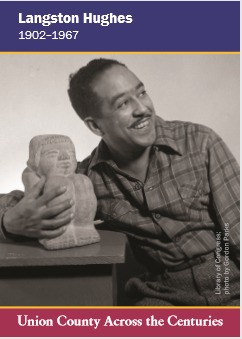
A prolific poet, novelist and playwright, Langston Hughes was an influential figure in the 1920s Harlem Renaissance. He came to Westfield in the 1930s, when his patron, “Godmother” Mason Mrs. Rufus Osgood Mason) found him a place to stay because she “believed that if Hughes lived in Harlem, he would be too distracted,” according to biographer Laurie F. Leach. During his stay in Westfield, he wrote several plays and collaborated with Zora Neale Hurston, who also lived in town, to create Mule Bone: A Comedy of Negro Life in Three Acts, a play they never staged. It was published posthumously. In production.
Zora Neale Hurston—novelist, short story writer, folklorist, anthropologist—lived in Westfield during the early 1930s. Perhaps best known for her 1937 novel, Their Eyes Were Watching God, she was originally from the South. Her studies brought her to Barnard College in New York, where she was the sole black student. While she made significant contributions to the Harlem Renaissance, writing about the African-American experience and racial divisions, her novels went relatively unrecognized by the world until Alice Walker’s essay “In Search of Zora Neale Hurston” was published in 1975.
Walking along the Blue Brook, from Lake Surprise to Seeley’s Pond, and then downstream along the Green Brook, if you look carefully, you will see the foundations of long-forgotten mills. During the 18th and early 19th centuries, these waterways were the industrial hub for this area, producing everything from lumber to paper to gunpowder, grist, material for hats and crushed stone. There were upwards of 12 mills along these two brooks. In some spots, you can still see remnants of the dams, sluices, and spillways that provided the water power to drive the machinery.
Tin Kettle Hill played a vital role in the Revolutionary War. Gen. George Washington stationed sentries on the 186-foot hill to warn of British troop advances. There were several, leading to the Battles of Springfield and Connecticut Farms. From 1903–1906, the Pennsylvania Railroad leveled Tin Kettle Hill, using the soil to build a new route to New York City. Not long after, the Rahway Valley Railroad built a line connecting Kenilworth to Summit. Passenger service on the RVR—it ran along the Kenilworth side of what would become Galloping Hill Golf Course—discontinued soon after the golf course opened in 1928.
The Union County Performing Arts Center still stands today, in good measure, because no one wanted to see its historic Wurlitzer pipe organ fade into memory. Custom built in 1928 for silent movies, the Rahway Theatre organ’s 600+ pipes were installed in two lofts on both sides of the proscenium to heighten the sound. During WWII, many organs were scrapped, their metal donated to the war effort. This organ miraculously survived the arrival of sound movies and continues to be used for concerts and movies. Once one of almost 1,000 theater organs in New Jersey, it is now one of 11.
Peter Willcocks, an Englishman, with his wife Phebe and their five children, moved from Long Island to the Watchung Mountains in 1736, settling near the area known today as the Deserted Village of Feltville. Willcocks built a sawmill alongside the Blue Brook to produce lumber for settlers coming to farm the surrounding countryside. As trees were cut for lumber, the forest was cleared for farmland. While visitors to the Reservation today sometimes think they are walking in untouched virgin forest, most of the area was farmland and pastures well into the 1800s.
For a time, the piano/organ manufacturingfirm Aeolian was such a dominant presence here that the sign at the train station read: “Welcome to Garwood-Aeolian.” Founded in 1888, Aeolian built its first pipe-organ factory in Garwood. Projects included a 10,010-pipe organ built for Pierre du Pont at Longwood Gardens, where Du Pont built a ballroom to house it. Aeolian’s attempt to corner the music market to protect its player-pianos led to Congress establishing the “cover song” rule. Garwood’s library collection includes the long list of items for sale when the plant was liquidated, down to boxes of wood screws.
Moving to Murray Hill in 1941, Bell Labs was the biggest laboratory for ideas and innovation in the world. Researchers developed the laser, solar cell, radio astronomy, Unix operating system, and programming languages. Eight Nobel Prizes were awarded for work completed here. As author Jon Gertner observed,the Labs “had this huge stream of money that was flowing, so it could hire the best people, build the best facilities.” Scientists reached their prime with the invention of the transistor in 1947, “the building block of all digital products in contemporary life.”
Moving to Murray Hill in 1941, Bell Labs was the biggest laboratory for ideas and innovation in the world. Researchers developed the laser, solar cell, radio astronomy, Unix operating system, and programming languages. Eight Nobel Prizes were awarded for work completed here. As author Jon Gertner observed the Labs “had this huge stream of money that was flowing, so it could hire the best people, build the best facilities.” Scientists reached their prime with the invention of the transistor in 1947, “the building block of all digital products in contemporary life.”
When it came to marketing, few did it better than Lionel, who convinced generations that Christmas wasn’t Christmas without a model train chugging beneath the tree. Founded in 1900 by 23-year-old Joshua Lionel Cohen, who built his first toy train atage 7, the Lionel Manufacturing Co. built one of its earliest plants in Hillside in 1929. Business took off, with the factory expanding in 1940 and several times thereafter. At its peak, the factory employed more than 2,000 workers. After declaring bankruptcy in 1969, Lionel sold the rights to the product line, but continuing financial difficulties led to the closing of the Hillside plant in 1974.
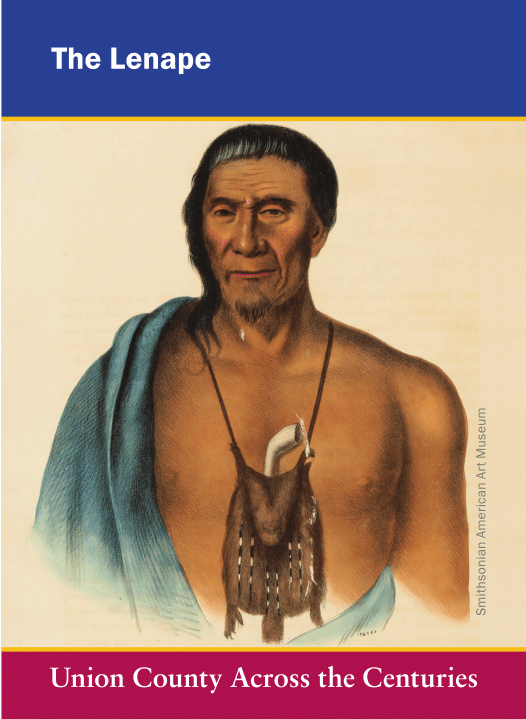
“The complexion of these people is black…Their hair is black and thick and not very long. It is worn tied back upon the head. In person they are of good proportion, of middle stature a little above our own, broad across the chest, strong in arms and well formed in the legs and other parts of the body. The only exception to their good looks is that they have broad faces; but not all, however, as we saw many that had sharp ones with large black eyes and a fixed expression. They are acute of mind, active and swift on foot.” — Giovanni da Verrazano, 1524
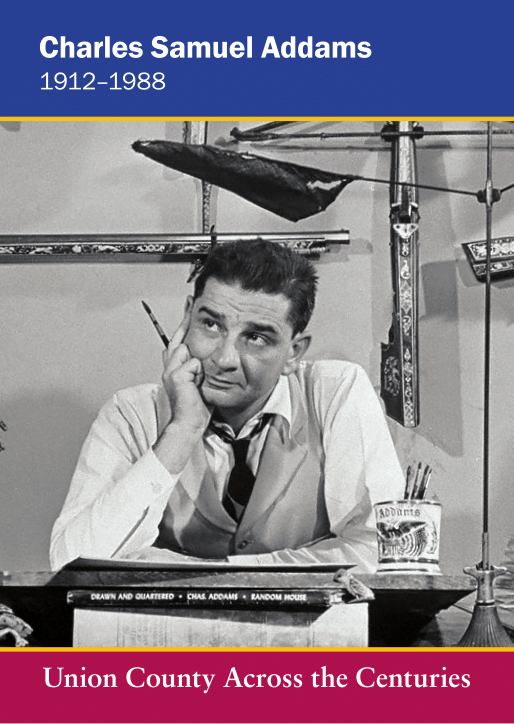
Born and raised in Westfield, Charles Addams drew cartoons for the high school’s literary magazine and later studied art. His cartoons were published in The New Yorker magazine for decades and also seen regularly in Collier’s and TV Guide. During World War II, Addams worked on animated training films for the U.S. Army. His most popular characters, the Addams Family, first drawn in 1938, appeared many times in The New Yorker and became the basis for the popular mid-1960s television series. The Addams Family was later reworked for feature films and adapted as a musical.
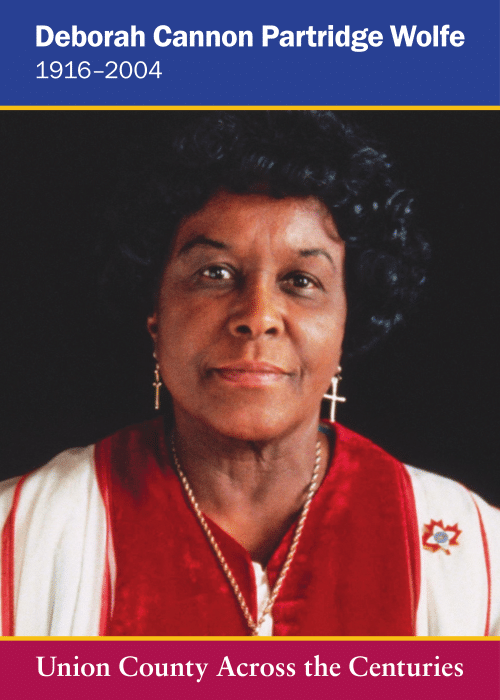
Raised in Cranford, Deborah Cannon Partridge Wolfe earned a doctorate in education and founded the Tuskegee Institute’s Education graduate program. A person of many “firsts,” she was the first and only African-American to serve on both the NJ Board of Higher Education and the NJ Board of Education— and was the first black faculty member of the Universities of Illinois and Michigan. Wolfe advised several U.S. Presidents on education issues. As the first Education Chief of the Congressional Committee on Education and Labor, she shaped dozens of laws. Later, she was among the first African-American women ministers ordained by the Baptist Church.
Aaron Miller was one of the earliest clockmakers in New Jersey. In 1747, he advertised in the New York Gazetteer that he not only sold “all sorts of clocks after the Dutch manner,” but if you needed a compass, chains for surveying, or bells of any size, he was your guy. In 1759, the First Presbyterian Church in Elizabethtown hired him to make a clock for the church steeple, and while there is no record of his fee for making the clock, the church treasurer’s books noted Miller was paid L10.6.9 for carpentry and painting the clock face.
Aaron Miller was one of the earliest clockmakers in New Jersey. In 1747, he advertised in the New York Gazetteer that he not only sold “all sorts of clocks after the Dutch manner,” but if you needed a compass, chains for surveying, or bells of any size, he was your guy. In 1759, the First Presbyterian Church in Elizabethtown hired him to make a clock for the church steeple, and while there is no record of his fee for making the clock, the church treasurer’s books noted Miller was paid L10.6.9 for carpentry and painting the clock face.
At the turn of the 20th century, investigative journalists, dubbed “muckrakers,” and crusading citizens, launched a movement demanding health standards for the food and drug industries. From unsanitary conditions in slaughterhouses to dangerous additives in drugs, the demand for reform was led by activists like Alice Lakey of Cranford, who met with Pres. Theodore Roosevelt to gain his support, and who organized more than a million women to write to Congress in support of what would ultimately become the Pure Food and Drug Act of 1906. For her groundbreaking work, Lakey was elected to the National Academy of Social Sciences.
Born two years before the invention of the photograph, Guillermo Thorn would grow up to see photography infiltrate every aspect of 19th-century life. Thorn gave up a brief career as a drawing and painting teacher and opened his first studio in Saugerties, NY, before moving to Plainfield in 1864. While he quickly established himself as a professional photographer, taking portraits and scenics of the area, his personal life was marred by tragedy. By 1870, disease claimed the lives of his wife, Alice, and their five children. He eventually remarried, with his later children becoming muses for his pictorial work.
Bestowed for conspicuous gallantry at the risk of life—beyond the call of duty—this medal is the highest award for valor in action by an individual in the U.S. Armed Services. Those from Union County honored are:
- Civil War: William Brant, Jr., Third Battle of Petersburg; James Madison Drake, Battle of Port Walthall Junction; Rufus King, Jr., Battle of White Oak Swamp; Julian A. Scott, Battle of Lee’s Mill (Yorktown); John Williams, Battle Port Royal
- Indian Campaigns: Theodore Schmidt, Chiricahua Mountains
- World War I: Alan Louis Eggers & Thomas E. O’Shea, Le Catelet; Fred W. Stockham, Bois-de-Belleau
- Vietnam War: Charles J. Watters, Dak To Province
Elias Boudinot lived at Boxwood Hall and was a member of Congress when the Articles of Confederation, the nation’s first attempt at self-government, were ratified. In 1782, he was elected President of Congress and approved the first draft of the Treaty of Paris. The Elizabethtown lawyer and statesman supported numerous civic, religious and educational causes and advocated for the rights of African and Native Americans. During the American Revolution, he served as Commissary General of Prisoners, getting food and supplies to prisoners and arranging prisoner exchanges.
Born two years before the invention of the photograph, Guillermo Thorn would grow up to see photography infiltrate every aspect of 19th-century life. Thorn gave up a brief career as a drawing and painting teacher and opened his first studio in Saugerties, NY, before moving to Plainfield in 1864. While he quickly established himself as a professional photographer, taking portraits and scenics of the area, his personal life was marred by tragedy. By 1870, disease claimed the lives of his wife, Alice, and their five children. He eventually remarried, with his later children becoming muses for his pictorial work.
John Shippen was nine when his father, a Presbyterian minister, was sent to the Shinnecock Indian Reservation on Long Island. Working as a caddie at the nearby golf course, he learned the game from the club’s Scottish professional. He excelled, finishing 5th at the 1896 U.S. Open, but not before there was a threatened boycott by pro golfers because he was black. They backed down after the USGA president vowed the tournament would proceed even if only Shippen and one other golfer played. Shippen competed in five more Opens, making his career in golf at several clubs, the last, Shady Rest in Scotch Plains.
As a Plainfield High School student, she was known as Peggy White. As a photojournalist, she became known to the world as Margaret Bourke-White. During World War II, she covered the invasion of Russia, the liberation of Italy, and German concentration camps. She was the first female war correspondent permitted to work in combat zones. Her work was featured on the cover of Life magazine’s 1936 inaugural issue. Bourke-White pioneered the photo essay; her series on the Depression era rural South, mining in South Africa, Korean guerrilla warfare, American industry, and portraits of world leaders are renowned.
Hearing General Washington’s army at Morristown was demoralized, Hessian General Knyphausen thought it the perfect chance to crush the American army. But to get his 5,000 British and Hessian troops from Elizabethpoint through the Hobart Gap, he had to pass through Connecticut Farms (part of current-day Union and Kenilworth). Although significantly outnumbered, the Americans led by General Maxwell held their ground and the British, in danger of being outflanked, withdrew. During the fighting, the Rev. James Caldwell’s wife Hannah was shot, her death becoming a rallying cry for troops weeks later at the Battle of Springfield.
Over the course of her life, Hazel Fields was a teacher, hospital dietician, corset saleswoman and housekeeper. In a 1980 interview, she discussed her life, recalling how black and white kids grew up as friends in Plainfield, but in high school, black and white female students were not permitted to swim together. She recalled her grandmother having been a slave in Virginia, her long commutes from Plainfield to New York in 1929, and an unforgettable train ride to North Carolina in a soot-filled Jim Crow car. As a member of the Women’s Achievement Club in Plainfield, she helped bring in prominent African Americans as speakers, including Adam Clayton Powell.
Born and raised in Elizabeth, Catherine Bauer Wurster became an architect, an influential author and one of the nation’s foremost advocates for affordable public housing. She was a consultant and advisor to five U.S. Presidents and many agencies on matters of urban housing and planning, and was the primary author of the Housing Act of 1937, the nation’s first affordable housing legislation. Moved by the visible ravages of the Great Depression, Wurster believed that democracy depended upon the provision of well-designed, high-quality housing for all citizens.
Alice Harding was a world-renowned horticulturalist and author, whose acclaimed garden at her Burnley Farm on the Fanwood-Plainfield border held an extraordinary collection of plants and flowers. Decorated by the French government for her horticultural accomplishments, Harding was a recognized authority on irises, lilacs and peonies. She wrote The Book of the Peony in 1917 and its smaller companion volume, Peonies in the Little Garden, in 1923. Her horticultural writing style was described as “engaging as a good novel.” A rose, an iris, French hybrid lilacs, a tree peony, and herbaceous peonies were named in her honor.
Frank, Joseph, and James Boland were early aircraft designers from Rahway. Like the Wright Brothers, these talented brothers operated a bicycle shop before becoming aviation pioneers. They experimented with tailless aircraft and formed the Boland Airplane and Motor Company, assembling a plane in Rahway in 1907. Frank was the test pilot, Joseph handled mechanical aspects, and James managed the business side of their company. In 1910, the Boland brothers built a scale model of a new type of plane named the “Bluebird.” It is on display at the Smithsonian in Washington, DC.

As automobiles became a fixture in American culture in the 1930s, millions of people took to the roads. But for African Americans, a road trip often involved having to contend with segregation and widespread racism because of all the hotels, eateries and gas stations that denied them service. In 1936, Victor H. Green, a postal worker living in New York City, compiled The Negro Motorist Green Book, a travel guide listing nondiscriminatory places to eat and rest. Over the years, a number of establishments were listed in Elizabeth, Kenilworth, Linden, Plainfield, Rahway, Roselle, Scotch Plains, Summit, and Vauxhall (Union)
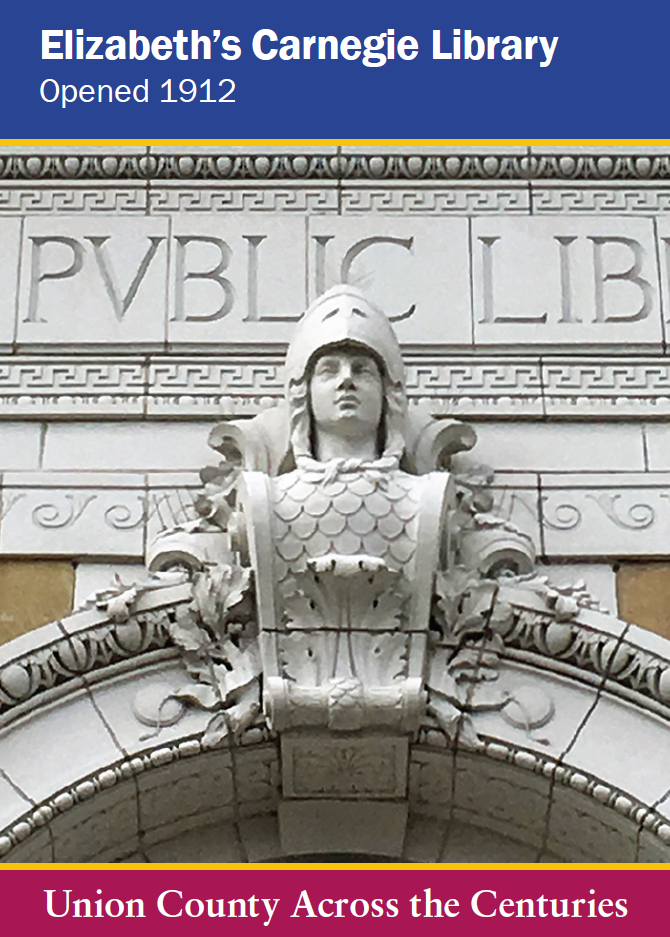
During the “Free Library movement” (roughly 1880 to 1929), wealthy steel magnate Andrew Carnegie donated money for the construction of nearly 1,700 “Carnegie” public libraries across the country. In 1910, $130,810 was granted to construct Elizabeth’s Main branch on Broad Street and the Liberty Square branch, now a senior center. Designed by Edward Lippincott Tilton, architect of many libraries as well as Ellis Island immigration station, and Charles Godfrey Poggi, prolific Union County architect, the gorgeous Broad Street Library evokes an Italian palazzo and echoes Boston’s Public Library. Of six Carnegie libraries built in Union County, only Elizabeth’s remains
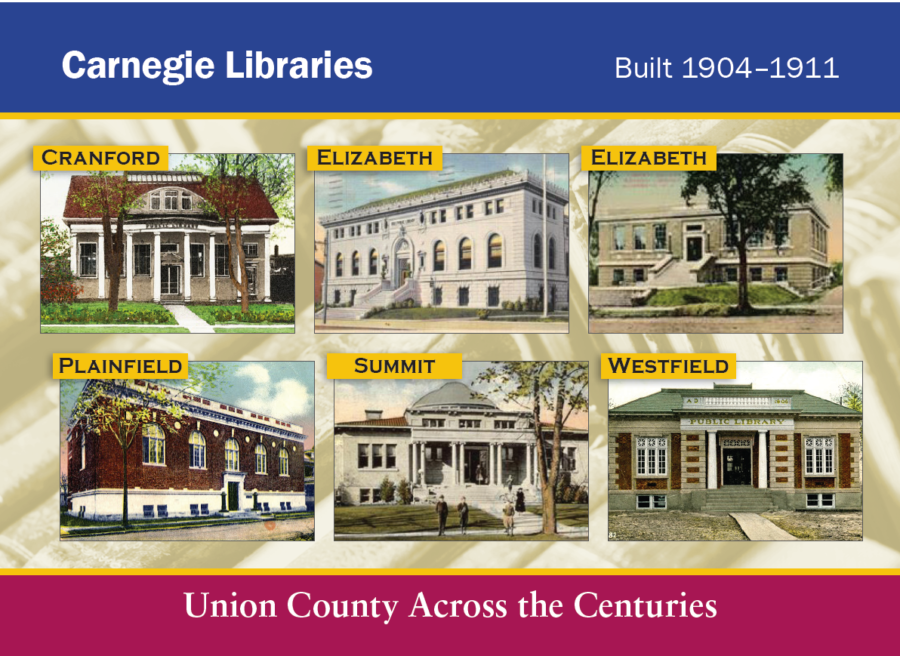
During the “Free Library movement,” the wealthy steel magnate Andrew Carnegie donated money for the construction of public libraries. From 1883 to 1929, nearly 1,700 Carnegie libraries were built across the country—with six built in Union County: Westfield (built in 1904); Cranford (1908); Summit (1909); Elizabeth Main Branch on Broad Street (1910); Elizabeth Liberty Square (1910); and Plainfield (1911). Of these buildings, only the Elizabeth Main Branch on Broad Street still stands and remains in use as a public library. Elizabeth Liberty Square is now a senior center, and the Westfield building is currently a bookstore. The others were razed.
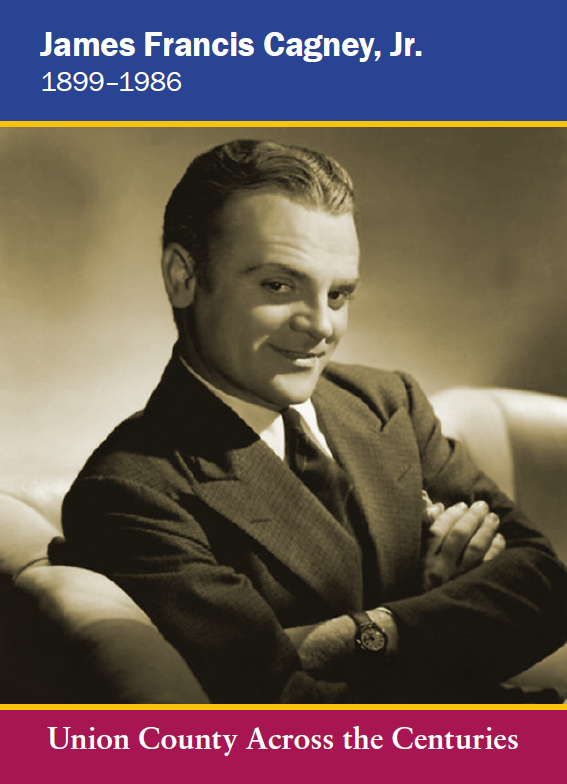
This renowned American actor was known for his high-energy performances, distinctive voice and comic timing. He was also a fine dancer. James Cagney’s long career spanned from the 1920s to the 80s. His acclaimed performances ranged from Vaudeville to Broadway, and Hollywood films, including Yankee Doodle Dandy (1942), Mister Roberts (1955), and Ragtime (1981). Cagney received an Oscar for Best Actor, the American Film Institute’s Life Achievement Award and the Presidential Medal of Freedom. He was an early resident of the unique Free Acres community in Berkeley Heights.
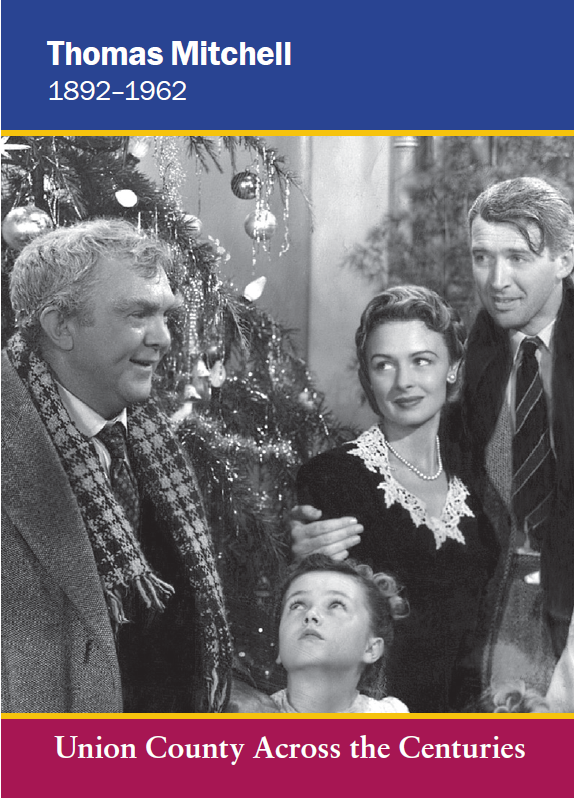
Born into a newspaper family, Thomas Mitchell grew up in Elizabeth. His father, an Irish immigrant, was a reporter at the old Elizabeth Journal, as was his brother. After initially working in journalism at a few newspapers, Mitchell pursued acting. He built a strong resume on Broadway, then went on to a Hollywood career, acting in many popular films, including Stagecoach Mr. Smith Goes to Washington, Gone with the Wind, High Noon, and It’s a Wonderful Life— in which he played Uncle Billy. He was the first actor to win the Triple Crown of Acting Awards: an Oscar, an Emmy and a Tony.
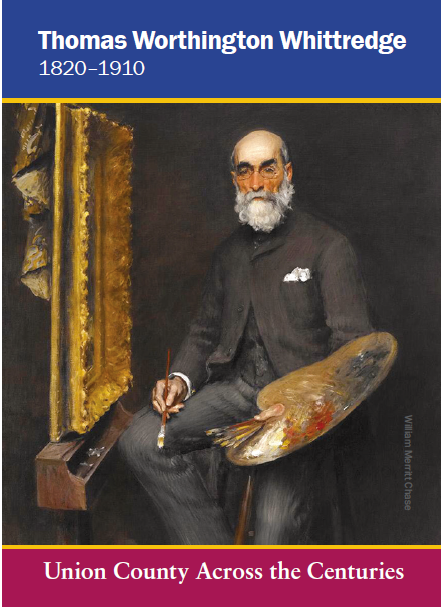
A highly regarded artist of the Hudson River School, Whittredge painted landscapes that hang in major museums and the Carter House, home of the Summit Historical Society. Whittredge moved to Summit in 1880, where he continued to paint for thirty years. He had traveled from the Great Plains to the Rockies in 1865 with Sanford Gifford and John Frederick Kensett, resulting in some of his most important work. “Whoever crossed the plains …could hardly fail to be impressed with its vastness and silence and the appearance everywhere of an innocent, primitive existence,” he wrote.

The Central Railroad of New Jersey played a major role in the development of Union County, from Elizabethport to Plainfield. Founded in 1831 as the Elizabethtown & Somerville Railroad, horse-drawn trains took passengers from Elizabeth to Elizabethport and the ferry to New York. The arrival of steam engines in 1839 coincided with the line reaching Plainfield. Through mergers, the CNJ continued expanding west and south, connecting to Somerville and out to Pennsylvania, along with the famous Blue Comet, which ran from the CNJ’s main terminal in Jersey City to Atlantic City.
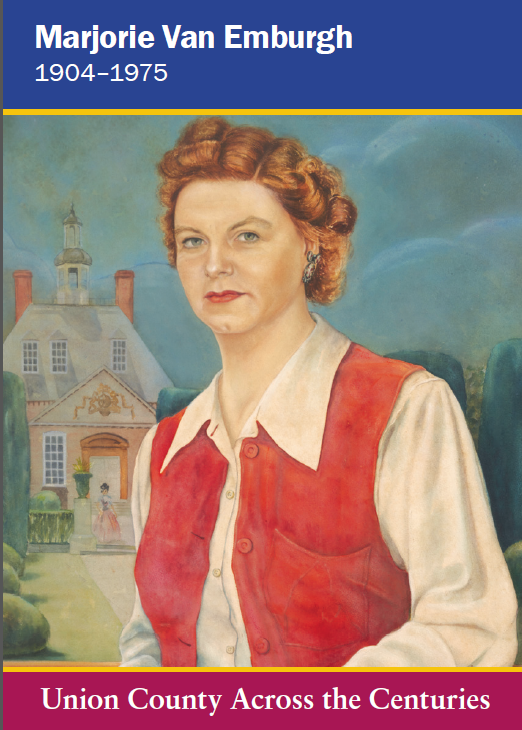
In 1926, artist Marjorie Van Emburgh transformed an old Plainfield carriage house into the Van Emburgh School of Art. While the school built a reputation for excellence in art education, it did occasionally ruffle old Victorian sensibilities—a 1933 exhibition of nudes by the school’s artists caused enough of a stir that The New York Times covered it. In 1936, the school outgrew its original location and moved to downtown Plainfield. In 1964, the school was acquired by Dudley V. duCret and moved again to its current Central Avenue location. Van Emburgh remained on the faculty until 1975.
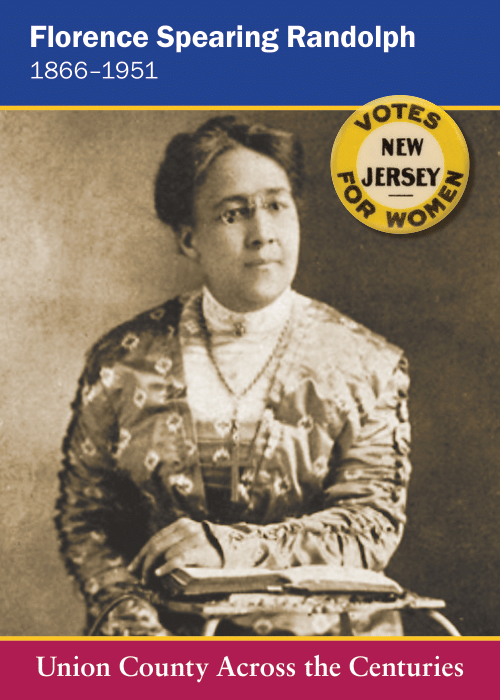
Florence Spearing Randolph was the first African-American woman to enroll at Drew University. Later she became one of the first women in the African Methodist Episcopal Zion Church denomination to be ordained as a Deacon, to become an elder, and to obtain a license to preach. From 1925 to 1946, she served as pastor of Wallace Chapel AME Zion Church in Summit. Randolph organized the New Jersey State Federation of Colored Women’s Clubs, which focused on issues of race, gender, and social inequality. She was a member of the Executive Committee of the New Jersey State Suffrage Association
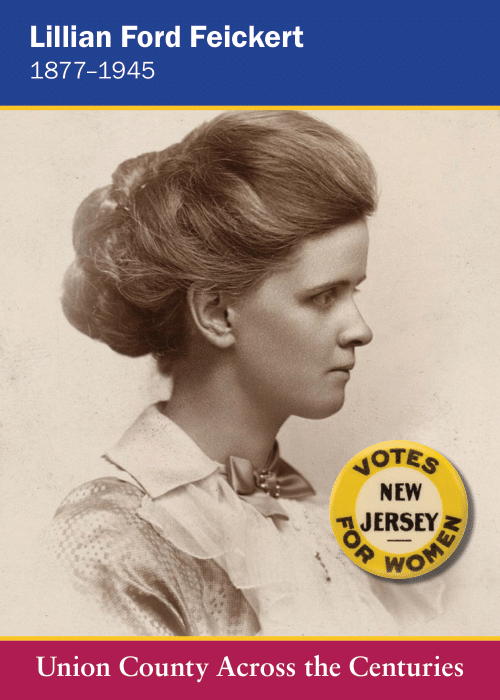
Lillian Feickert, a resident of Plainfield for a time, supported Prohibition and became a passionate women’s rights activist. During her tenure as President of the New Jersey Women’s Suffrage Association, from 1912 to 1920, New Jersey officially ratified the 19th amendment. In recognition of her leadership, she was then named vice-chairman of the New Jersey Republican State Committee. In this same period, she was also appointed treasurer of the New Jersey League of Women Voters. In 1928, Feickert became the first woman to run for the U.S. Senate from New Jersey, although her bid was unsuccessful.
A prolific writer and speaker, Blackwell became the first woman in the USA to be ordained as a mainstream Protestant minister. During a separation from the ministry, she focused on women’s rights, giving many speeches—including an address to the first National Women’s Rights Convention in 1850. She was elected president of New Jersey’s Women’s Suffrage Association in 1891. In 1901 she moved to Elizabeth, where she was the minister of a congregation and lived until her death. At age 95, she was the sole participant of the 1850 Convention to see the 19th Amendment passed. She voted in 1920, and died the following year.
Born in Plainfield, Harned Lozier was orphaned at age 11, and educated at Plainfield Academy. She attended medical school in her thirties, and was among the first women in the United States to become a doctor. In 1863 she founded the New York Medical College and Hospital for Women—the first school where New York City women could study medicine and the first hospital where female patients could receive medical care from doctors of their own gender. Active in the women’s suffrage movement, Harned Lozier was president of the New York City Woman Suffrage Society from 1873 to 1886
Hall was a noted writer, critic, women’s suffrage activist and lecturer who resided for a time in Scotch Plains, and then in Plainfield. During her tenure as president of the New Jersey Women’s Suffrage Association (1893–1900), three new suffrage societies were established in Union County (Elizabeth, Plainfield and Westfield). Books she wrote include Women’s Progress, an account of New Jersey’s suffrage movement. She assisted in authoring Julia Ward Howe, a book about her famous mother, which earned her and her sisters the first Pulitzer Prize ever awarded for biography (1917).
Nina Allender was a distinguished artist, cartoonist, and women’s rights activist who campaigned for women’s suffrage as an organizer, speaker and artist. She became the “official” cartoonist for National Woman’s Party’s publications. Her illustrations of what became known as the “Allender Girl” depicted suffragists as young, attractive women, reflecting the wives, daughters and sisters of the era. Prior to the Allender Girl, suffragists were depicted as old and unattractive. After spending most of her career in New York and Chicago, Allender moved to Plainfield, where she lived the final years of her life.
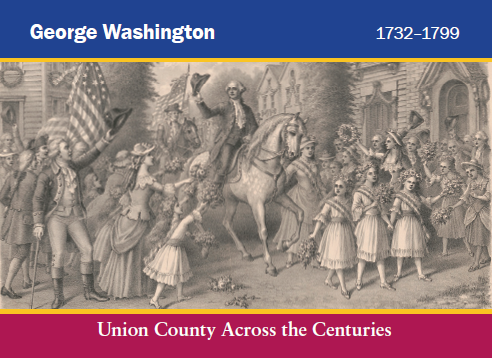
George Washington was no stranger to Union County. In June 1780, during the Battles of Connecticut Farms and Springfield, he stationed his field command at Bryant’s Tavern. Washington’s account book shows he paid Jacob Bryant (Briant) $800 for food and drink for himself and his staff. The $800, in highly inflated Continental currency, translated to about $20. The tavern’s location, off Broad Street & Morris Turnpike, was in Springfield during that era, but now part of modern-day Summit. Between construction of a trolley line from Elizabeth to Morristown and its conversion to a “highway,” no visible remains mark its location.
Created by an act of Congress in 2009, the Washington-Rochambeau National Historic Trail marks the contribution made by the French that enabled the Continental Army to finally defeat the British in the Revolutionary War. The 680-mile trail crosses Union County from Summit to Scotch Plains, passing right in front of the Miller Cory House in Westfield. French General comte de Rochambeau landed in Rhode Island in July 1780 with an army of 450 officers and 5,300 men. Their arrival came just in time, for in the fall of 1780, with the war well into its fourth year, the Continental Army was running short of men, weapons, food, clothing, and money.

